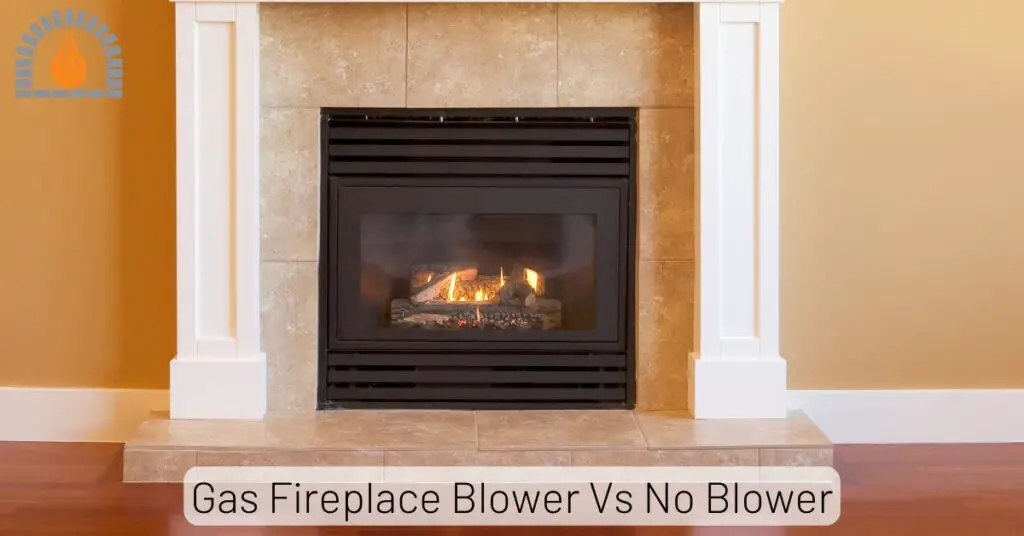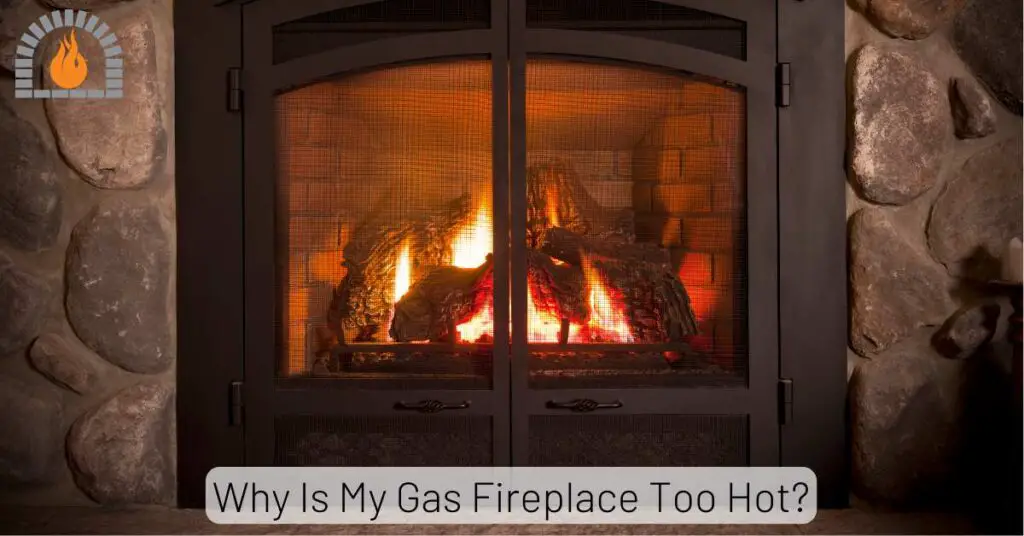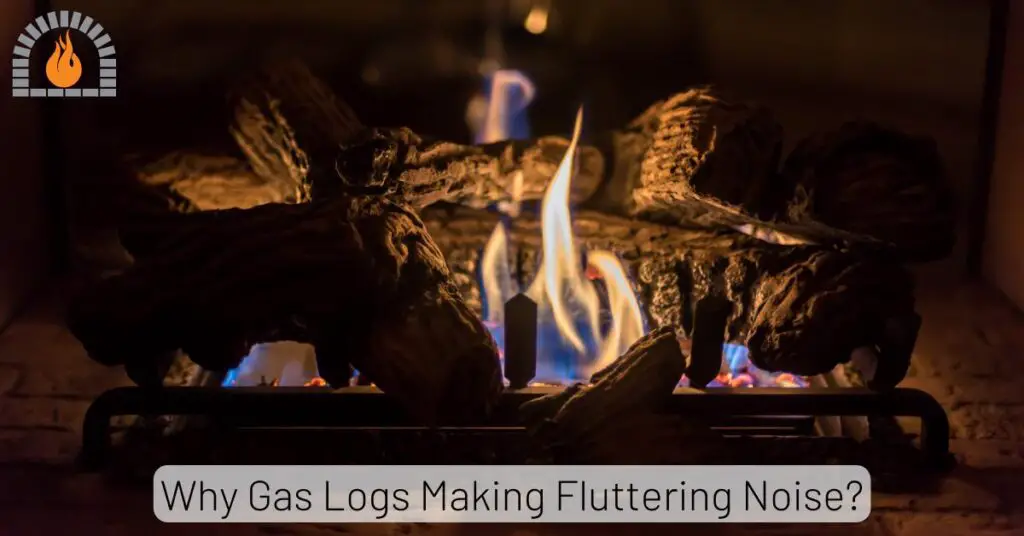Have you ever wondered what keeps your gas fireplace running smoothly and safely? The unsung hero in this scenario is the natural gas fireplace control valve. This small but crucial component plays a vital role in controlling the gas flow to your fireplace, ensuring efficient and safe operation.
Let’s explore everything you need about natural gas fireplace control valves.
Natural Gas Millivolt Gas Control Valve

- NATURAL GAS MILLIVOLT CONTROL
- QUALITY OEM COMPONENT
- ADJUSTABLE FLAME CONTROL
- REPLACES MULTIPLE MODELS
What is Gas Fireplace Control Valve?
A gas fireplace control valve is a crucial component of a gas fireplace system. It regulates the gas flow to the burner, ensuring safe and efficient operation of the fireplace.
- The control valve’s primary function is to manage the amount of gas that reaches the burner. This regulation is essential for maintaining the desired flame size and heat output.
- Many gas fireplace control valves are integrated with ignition systems. They work with a pilot light or electronic ignition system to ignite the gas safely when the fireplace is turned on.
- Control valves have safety features to prevent gas leaks and potential hazards. These include:
- Thermocouple or Thermopile: These devices detect whether the pilot light is lit. If the pilot light goes out, the thermocouple or thermopile signals the control valve to shut off the gas flow to prevent a buildup of unburned gas.
- Pressure Regulation: The valve ensures the gas pressure remains within safe and operational limits.
- Automatic Shutoff: In case of a malfunction or overheating, the control valve can automatically shut off the gas supply.
- User Control: The control valve allows users to turn the fireplace on and off, adjust the flame height, and control the heat output. This can be done manually using a knob or switch or remotely using a thermostat or remote control.
- Types of Control Valves:
- Millivolt Valves: Operate using a small electric current generated by the thermopile, making them independent of household electricity.
- Electronic Valves: Require electricity to operate and often offer advanced features such as remote control and programmable settings.
Related Post: Best Gas Fireplace On Off Valve
Importance of a Millivolt Gas Control Valve
A millivolt gas control valve is critical in various gas-powered appliances such as stoves, heaters, fireplaces, and water heaters. Its importance stems from several key factors:

- The primary role of a millivolt gas control valve is to ensure the safe operation of gas appliances. It regulates gas flow, preventing leaks that could lead to dangerous situations such as explosions or fires. The valve also includes safety features that can shut off the gas supply if it detects a malfunction, such as a pilot light going out.
- Millivolt gas control valves play a crucial role in improving the energy efficiency of gas appliances. By precisely controlling the amount of gas that is fed to the burner, these valves ensure that the appliance operates at optimal efficiency, reducing waste and lowering energy costs. This energy-saving feature should make the audience feel responsible and environmentally conscious, knowing they contribute to a more sustainable future.
- Millivolt systems use a thermocouple or thermopile, unlike other gas control systems that require an external electrical power source. This makes them highly reliable, especially in remote locations or during power outages, as they do not rely on the electrical grid.
- Millivolt gas control valves are often used in systems with remote controls or wall-mounted thermostats, providing users convenient ways to control their appliances. This enhances user experience and allows for better regulation of indoor temperatures.
- These valves are incredibly versatile and can be used in a wide range of gas appliances, from small space heaters to larger heating systems. Their ability to function independently of electrical power makes them suitable for various applications, including those in areas prone to power outages. This versatility should empower the audience, knowing they have a reliable solution for various gas control needs.
- Millivolt gas control valves are known for their durability. They are designed to withstand high temperatures and continuous use, making them a long-lasting solution for gas control in appliances.
How Does a Natural Gas Fireplace Control Valve Work?
A natural gas fireplace control valve is essential to regulating gas flow to the fireplace, ensuring safe and efficient operation. Here’s a detailed explanation of how it works:
Components of the Control Valve
- Pilot Light: A small, continuously burning flame that ignites the main burner.
- Thermocouple or Thermopile: Safety devices that detect whether the pilot light is lit. If the pilot goes out, these components will shut off the gas supply to prevent leaks.
- Main Gas Valve: Controls the flow of gas to the main burner.
- Control Knob: Allows the user to manually adjust the flame size and turn the fireplace on or off.
- Electronic Ignition System (if present): An alternative to a standing pilot light, where the pilot light is ignited electronically when needed.
How It Works
- Initial Ignition:
- The pilot light is lit manually during the initial setup for a standing pilot system. Once lit, the thermocouple or thermopile generates a small electrical current that keeps the gas valve open, allowing gas to flow to the pilot.
- For an electronic ignition system, when the fireplace is turned on, an electronic spark ignites the pilot light, igniting the main burner.
- Safety Mechanism:
- The thermocouple (for standing pilot systems) senses the heat from the pilot light. If the pilot light goes out, it cools down, stopping the electrical current and closing the gas valve to prevent gas from leaking.
- In systems with a thermopile, which generates more electricity than a thermocouple, the generated current can also power other safety and control features.
- Main Burner Operation:
- When the control knob or thermostat signals the need for heat, the main gas valve opens, allowing gas to flow to the main burner.
- The pilot light or electronic igniter ignites the gas at the main burner, producing the desired flame.
- Adjusting the Flame:
- Users can adjust the control knob to increase or decrease the gas flow, thereby controlling the size of the flame.
- Some advanced systems have remote controls or wall-mounted thermostats that allow users to set a specific temperature, adjusting the flame size automatically to maintain the desired heat level.
- Turning Off the Fireplace:
- Turning the control knob to the “off” position shuts off the gas flow to both the pilot and main burner in a standing pilot system.
- Turning off the fireplace deactivates the electronic igniter and shuts off the gas supply in an electronic ignition system.
Safety Features
- Oxygen Depletion Sensor (ODS): Monitors the oxygen level in the room. If the oxygen level drops too low, it shuts off the gas valve to prevent carbon monoxide buildup.
- Flame Failure Device (FFD): This device ensures that if the flame goes out for any reason, the gas supply is cut off automatically.
Types of Natural Gas Fireplace Control Valves
Control valves come in various types, each with unique features and benefits.
- Manual Control Valves:
- These are the most basic types of control valves. They require manual operation to adjust the gas flow and flame size.
- Remote Control Valves:
- Remote control valves offer the convenience of adjusting your fireplace from a distance. They typically come with a handheld remote to turn the fireplace on or off and adjust the flame.
- Thermostatic Control Valves:
- Thermostatic control valves automatically adjust the gas flow to maintain a set temperature, offering enhanced comfort and efficiency.
- Electronic Ignition Control Valves:
- These advanced control valves use electronic ignition to light the pilot light. They are more energy-efficient and often come with additional safety features.
Advantages of Using a Control Valve
- Precision in flow control
- Process efficiency
- Enhanced safety
- Automation and remote control
- Versatility
- Cost savings
- Consistency in product quality
- Adaptability to changing conditions
- Integration with process control systems
- Environmental benefits
Maintenance Tips for Longevity
- Ensure the pilot light and valve components are clean.
- Have a professional inspect your fireplace and control valve yearly.
- Ensure all connections are secure and free from corrosion. Always turn off the gas supply before performing maintenance.
- Use appropriate tools to avoid damaging components.
- Always consult a professional if you need more clarification.
- Upgrading your control valve can enhance your fireplace’s performance and convenience. Consider newer models with advanced features like remote control and electronic ignition.
FAQs
How often should I replace my natural gas fireplace control valve?
Control valves can typically last for many years with proper maintenance. However, if you notice persistent issues or decreased performance, it might be time for a replacement.
Can I install a control valve myself?
While some may attempt DIY installation, it is highly recommended that a professional handle the job to ensure safety and proper operation.
What are the signs that my control valve needs repair?
Common signs include difficulty lighting the pilot, irregular flame sizes, and gas odors. It’s best to consult a professional if you encounter any of these.
Are there intelligent control valves available for gas fireplaces?
Yes, intelligent control valves can be controlled via smartphone apps, offering even more convenience and control.
How do I choose the proper control valve for my fireplace?
Consider factors like compatibility with your fireplace model, desired features (manual, remote, thermostatic, electronic), and brand reputation. Consulting with a professional can also help you make the right choice.
Conclusion
The natural gas fireplace control valve is essential to ensure your fireplace operates safely and efficiently. Understanding how it works, the types available, and how to maintain it can help you enjoy your fireplace for years. Regular maintenance and proper handling are crucial to keeping your control valve in top condition.
Affiliate Disclosure: Fireplaceadviser.com is a participant in the Amazon Services LLC Associates Program. We may earn a commission when you click on certain links on this site and purchase.

Hello!! I am Jamal Khan. I often fix my home electric heaters and gas stove problems and research the common issues in the heating units to improve my knowledge and expertise. The aim of establishing fireplaceadviser.com is to share my expertise and knowledge with my audience.






